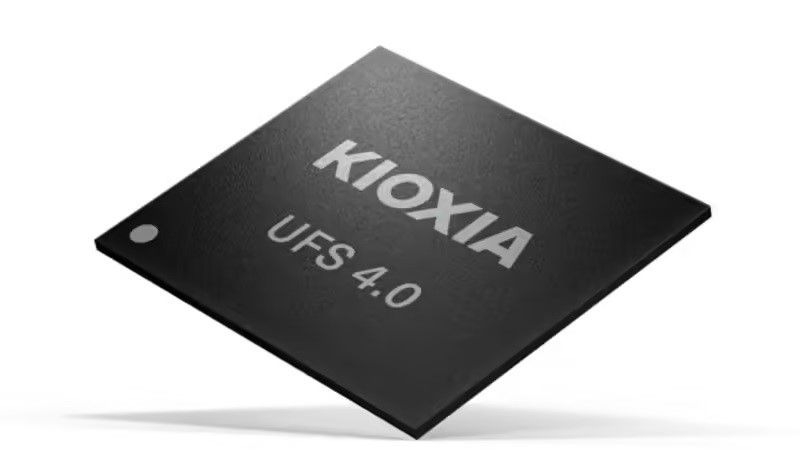In the increasingly fierce competition in the smartphone market, the innovation of storage technology has become the key for manufacturers to enhance the competitiveness of their products. Recently, a news about QLC UFS flash memory technology has aroused widespread attention in the industry. According to Taiwanese media "Electronic Times", UFS flash memory based on QLC NAND will be the first to be unveiled in the mobile phone products of OPPO and Transsion, and it is planned to achieve large-scale mass production in 2025. This move not only marks an important breakthrough in the field of storage technology, but also indicates that the cost of smartphone storage will usher in a new round of reduction.
1. Advantages and challenges of QLC UFS technology
QLC (Quad-Level Cell) UFS flash memory technology has a higher storage density than the mainstream TLC (Triple-Level Cell) UFS flash memory on the market. This means that the cost of QLC UFS is lower and the price is more affordable for the same capacity. For example, Kioxia's QLC UFS 4.0 product achieves sequential read speeds of up to 4,200 MB/s and sequential write speeds of up to 3,200 MB/s. These performance metrics are already able to meet the needs of most mid-tier users.
However, QLC UFS is relatively weak in terms of erase durability and performance. This limits its application scenarios to a certain extent, especially in the high-end market. Nonetheless, as technology continues to advance, the performance and durability of QLC UFS are expected to gradually improve, thereby expanding its range of applications.

Figure: UFS flash memory based on QLC NAND will be the first to be unveiled in mobile phone products from OPPO and Transsion
2. Market trends and price movements
As the flash memory market picks up in the second half of 2025, NAND prices will strengthen, while the price gap between QLC and TLC will widen further. This trend has prompted smartphone brands to consider formally incorporating QLC UFS into their supply chain systems. According to TrendForce's forecast, flash memory prices will decline by 8% year-on-year in the fourth quarter of 2024 and another 10% in the first quarter of 2025, and consumer flash memory prices are expected to rebound in the second half of 2025.
In this context, the introduction of QLC UFS will help smartphone brands offer more competitive products in the mid-range market while reducing production costs. For example, OPPO and Transsion can further improve the storage capacity and cost-effectiveness of their products by adopting QLC UFS technology, so as to attract more consumers.
3. The strategic layout of OPPO and Transsion
As important players in the global smartphone market, OPPO and Transsion are undoubtedly forward-looking strategic layouts that take the lead in adopting QLC UFS technology. OPPO has maintained a high market share in the global smartphone market, especially in the mid-to-high-end segment. By introducing QLC UFS technology, OPPO can further reduce production costs and enhance the market competitiveness of products while maintaining product performance.
Transsion is particularly strong in Africa and emerging markets. Through its cost-effective product strategy, it has quickly occupied a large market share. The introduction of QLC UFS will further enhance the cost-effective advantages of Transsion's products and help it maintain its leading position in the highly competitive market.
4. Industry impact and future outlook
Impact on smartphone brands: The introduction of QLC UFS will help smartphone brands offer more competitive products in the mid-market while reducing production costs. For example, users can buy a smartphone with 512GB or 1TB storage capacity at a lower price, which is a big attraction for users who need a lot of storage space.
Impact on the supply chain: With the popularity of QLC UFS, memory chip manufacturers will face new market demand, which will drive related companies to increase R&D investment and improve the technical level. For example, memory chip manufacturers such as Kioxia and Samsung are already actively deploying QLC UFS technology to meet the needs of the market.
Impact on consumers: The popularity of QLC UFS will provide consumers with larger capacity and more affordable storage solutions to meet the needs of users for high-capacity storage. For example, users can buy a smartphone with 512GB or 1TB storage capacity at a lower price, which is a big attraction for users who need a lot of storage space.
5. Conclusion
The introduction of QLC UFS technology marks an important change in the field of storage. Although it has certain limitations in terms of performance and endurance, its high storage density and low cost advantages make it have great potential in the mid-range market. With the continuous advancement of technology and the gradual acceptance of the market, QLC UFS is expected to become one of the mainstream options for smartphone storage in the next few years. For smartphone brands, supply chain enterprises and consumers, the popularity of QLC UFS will bring new opportunities and challenges. The first layout of OPPO and Transsion has undoubtedly injected a strong impetus into the promotion and application of this technology, which is worthy of widespread attention and expectation in the industry.






